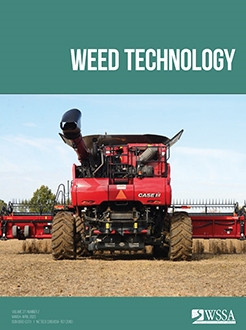Region- and system-specific research is needed to understand the viability of delayed cover-crop termination (i.e., planting green) as an integrated weed management (IWM) tactic in no-till soybean. In a 3-yr field experiment, we evaluated the potential for planting green to facilitate elimination of soil-applied, preemergence residual herbicides within a soybean phase of a 6-yr grain–forage cropping systems experiment in Pennsylvania. This IWM tactic was contrasted with a Standard treatment, which included 14 to 21 d pre-plant termination of cereal rye and a two-pass herbicide program with preemergence herbicides. A 63% increase in cereal rye biomass production was observed within the IWM treatment in 2019, but only a 22% and 33% increase in 2020 and 2021, respectively. In 2020, significantly lower volumetric water content (%VWC) was observed within the IWM treatment in dates closest to planting and greater % VWC at multiple dates in June and July compared to the Standard treatment. No differences occurred in soybean populations, but soybean biomass at the V4 growth stage was reduced in the Standard treatment compared to the IWM treatment, which we attribute to injury from preemergence applications. The Standard treatment resulted in greater soybean yield (2,590 kg ha–1) than the IWM treatment (1,870 kg ha–1) in 2020, but yields were similar in other years. The IWM treatment resulted in 58% fewer herbicide inputs, as measured by the number of active ingredients applied, compared to the Standard over the 3-yr study. Yet, peak weed biomass did not differ between treatments. However, the IWM treatment resulted in greater total horseweed density and the number of horseweed plants that exceeded recommended size-based height thresholds (10 cm) compared to the Standard treatment just prior to postemergence applications (35–42 d after planting) in 2020 and 2021, underscoring the importance of integrating surface mulch residues with effective herbicide sites of action.
Nomenclature: Horseweed; Erigeron canadensis (L.); cereal rye; Secale cereale L.; soybean; Glycine max (L.) Merr.






